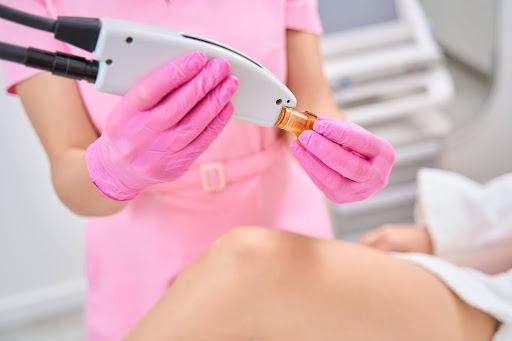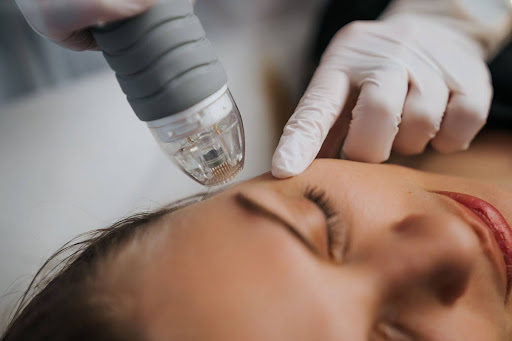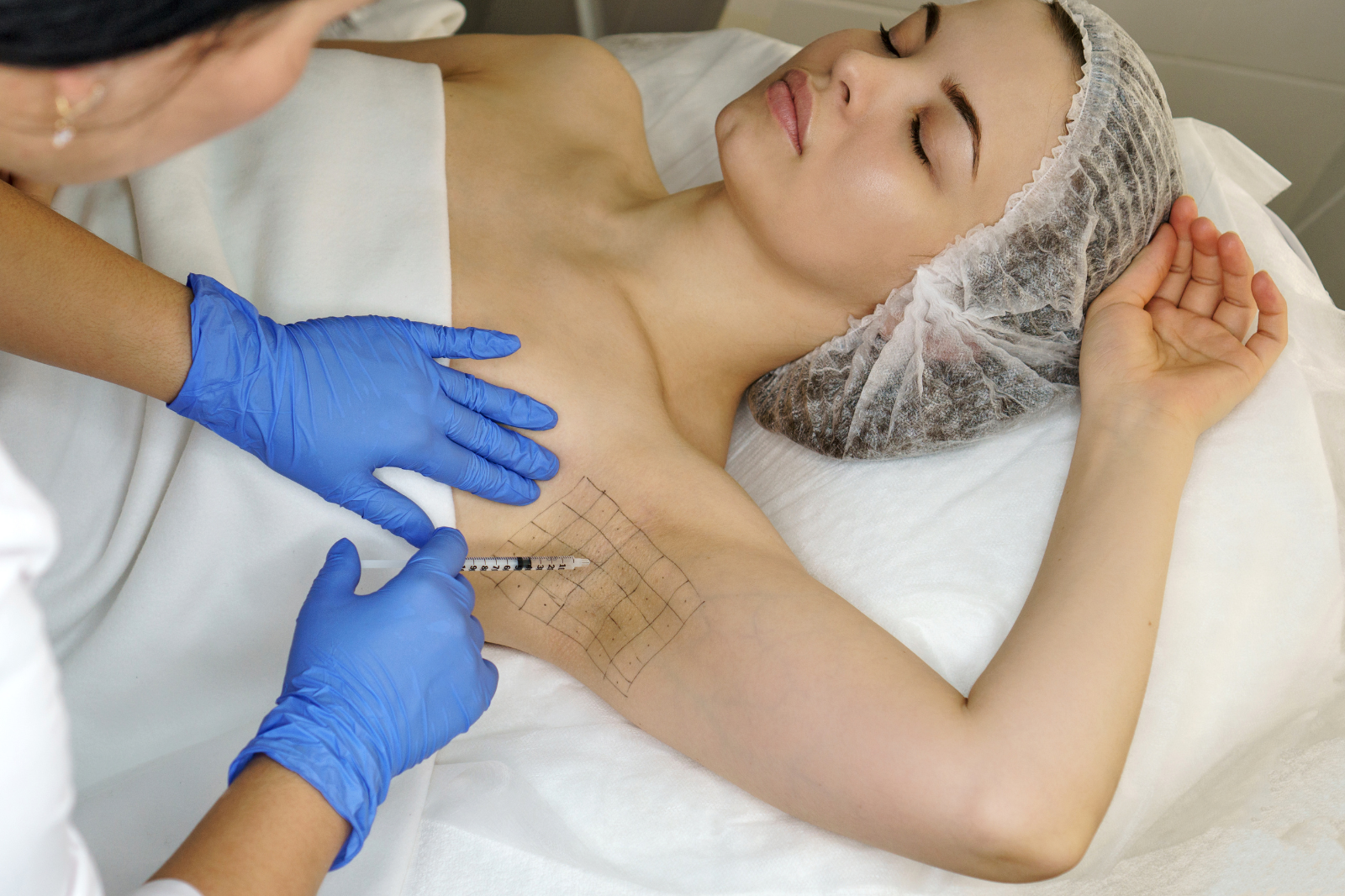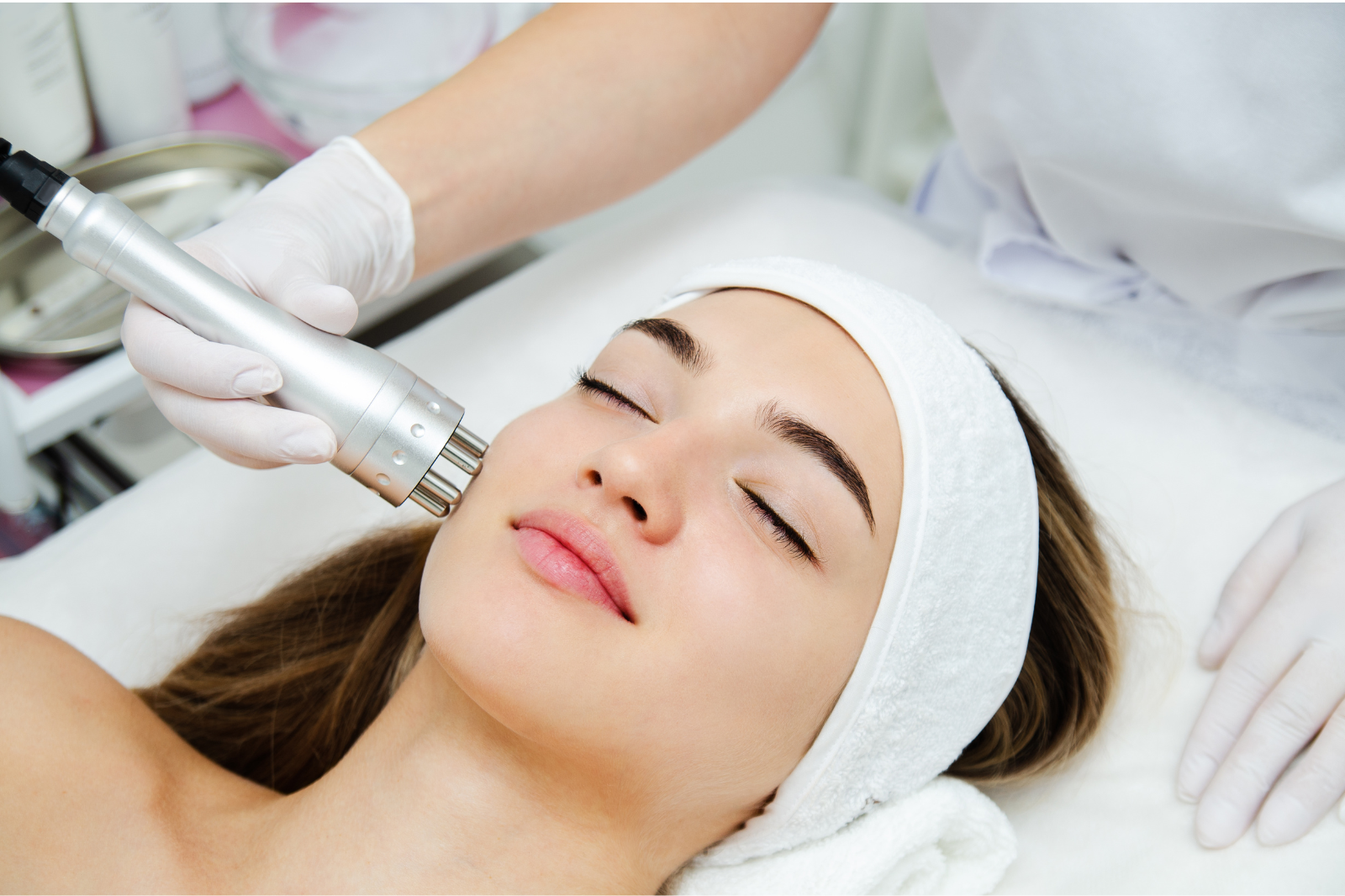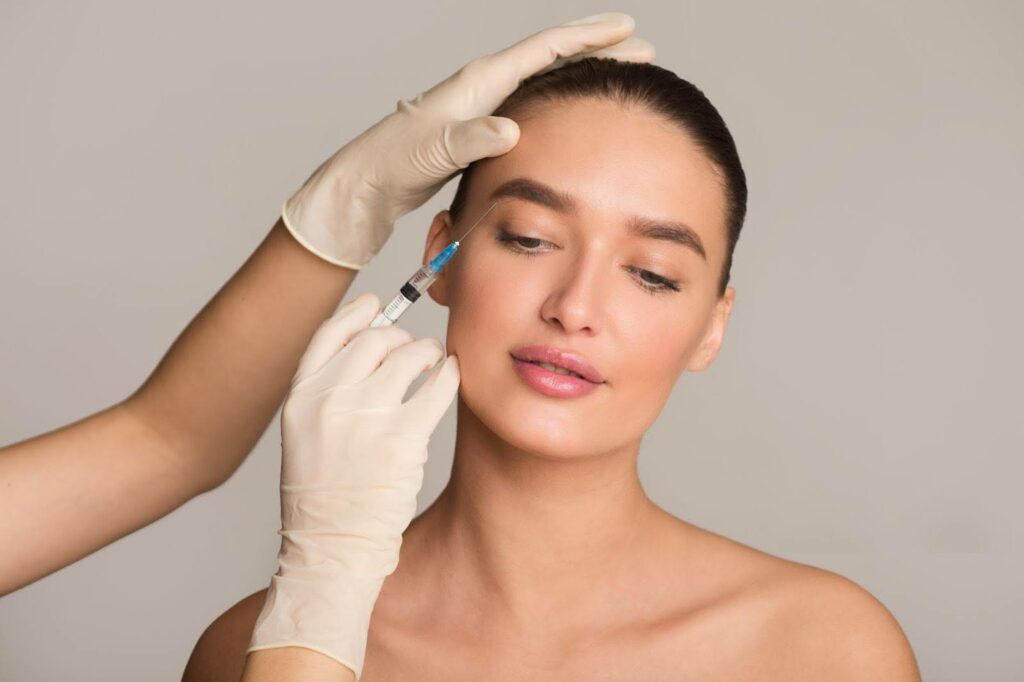In the quest for a youthful appearance, Botox has become the go-to treatment for millions of people worldwide. This comprehensive guide explores everything you need to know about Botox injections, from treatments and injection sites to potential side effects and alternative treatments.
What Exactly is Botox?
Botox is a neurotoxic protein produced by the bacterium Clostridium botulinum. In cosmetic applications, it is used as an injectable treatment to temporarily reduce the appearance of facial wrinkles and fine lines. Botox works by blocking nerve signals in the muscles where it is injected, preventing them from contracting and causing wrinkles.
This leads to a temporary smoothing effect on the treated areas, particularly in regions like the forehead, between the eyebrows, and around the eyes. Beyond cosmetic purposes, Botox is also utilized for various medical conditions, including muscle spasms, migraines, and excessive sweating, due to its ability to temporarily paralyze targeted muscles
Understanding the Science Behind Youthful Skin
Short for botulinum toxin, Botox is a purified protein derived from the bacterium Clostridium botulinum. This toxin, when used in controlled amounts, serves as a powerful tool to temporarily paralyze targeted muscles. This unique property makes it a favored option for addressing the wrinkles and fine lines that result from repetitive facial movements.
How Botox Works
The magic of Botox lies in its ability to disrupt the communication between nerves and muscles. By obstructing the signals that prompt muscle contractions, Botox effectively induces temporary muscle paralysis. This mechanism is particularly beneficial in smoothing out lines and facial wrinkles, especially in areas highly susceptible to repetitive muscle movement, such as frown lines and forehead wrinkles.
Imagine Botox as a skilled conductor orchestrating a harmonious symphony, where the musicians—our facial muscles—temporarily cease their dynamic movements. This pause in muscle activity allows the overlying skin to relax and smoothen, diminishing the appearance of wrinkles and granting a rejuvenated aesthetic.
Non-Invasive Cosmetic Procedures: Alternatives to Plastic Surgery
Exploring Botox Cosmetic Treatments
During Botox treatments, a qualified medical professional injects small amounts of the toxin into specific facial muscles. The procedure is relatively quick, often done in a practitioner’s office during a lunch break.
Common injection sites include:
- Frown Lines (Glabellar Lines): These are the vertical lines that appear between the eyebrows, often caused by frowning or concentrating.
- Forehead Lines (Horizontal Lines): Botox can be applied to horizontal lines on the forehead, typically formed due to raising the eyebrows or expressing surprise.
- Crow’s Feet (Lines Around the Eyes): These lines develop at the outer corners of the eyes and are associated with smiling and squinting.
- Bunny Lines: These are the diagonal lines that appear on the nose when scrunching it, resembling a bunny’s wrinkled nose.
- Lip Flip: Botox can be used to create a subtle “lip flip,” enhancing the appearance of the upper lip by relaxing the muscles around it.
- Neck Bands (Platysmal Bands): Botox injections may be employed to address vertical bands or cords that can form on the neck over time.
- Masseter Muscles: In some cases, Botox is used to slim the jawline by targeting the masseter muscles responsible for jaw clenching and grinding.
- Eyebrow Lift (Brow Lift): Botox can be strategically injected to lift the eyebrows, providing a more rejuvenated and refreshed appearance.
- Lateral Canthal Lines: These lines appear on the sides of the eyes and can be targeted to reduce the signs of aging.
- Perioral Lines: Botox can be used around the mouth to address fine lines and wrinkles, including smoker’s lines.
It’s crucial to have Botox injections performed by a qualified and experienced practitioner who understands facial anatomy to achieve optimal results and minimize potential side effects. The choice of injection sites is customized based on the individual’s facial structure and desired outcome. Always consult with a healthcare professional to determine the most suitable treatment plan for your specific needs.
Duration and Results
Botox treatments typically last 3-4 months. Results vary from person to person, and individual responses play a crucial role. Some people will notice effects within hours after treatment, while for others, it can take a few days. Botox is not a permanent treatment and regular follow-up treatments every 3-6 months are necessary to maintain a youthful appearance.
Potential Side Effects and Safety
Most individuals experience minimal side effects, such as temporary bruising or swelling. While complications are rare, adverse effects may include neck spasms, muscle paralysis, or an allergic reaction. It’s essential to have the procedure done by an experienced professional to minimize risks.
Why Botox is the Best Anti-Wrinkle Treatment
How to Prepare for a Botox Appointment?
Preparing for a Botox appointment involves a combination of practical considerations and communication with your healthcare professional to ensure a safe and successful experience.
Here’s a guide on how to prepare for your Botox appointment:
- Choose a Qualified Practitioner: Select a reputable and experienced healthcare professional.
- Consultation: Schedule a consultation before the actual appointment. Discuss your goals, medical history, any medications or supplements you’re taking, and any previous cosmetic procedures.
- Medical History: Provide a comprehensive medical history, including any allergies, past surgeries, or existing medical conditions. Be transparent about medications, especially blood thinners, which may need adjustment before the procedure.
- Avoid Blood Thinners: Several days before the appointment, avoid medications and supplements that can thin the blood, such as aspirin, ibuprofen, and certain vitamins. This minimizes the risk of bruising.
- Alcohol and Smoking: Limit alcohol consumption in the days leading up to the appointment, as alcohol can also contribute to bruising. If you smoke, consider reducing or quitting, as smoking can impair skin healing.
- Stay Hydrated: Maintain good hydration in the days before the appointment. Hydrated skin tends to respond better to cosmetic treatments.
- Avoid Strenuous Exercise: Refrain from strenuous exercise on the day of the appointment. Increased blood flow and sweating can potentially affect the absorption of Botox.
- Arrive Clean-Faced: Arrive with a clean face, free of makeup, lotions, or creams. This ensures a clean canvas for the practitioner and reduces the risk of infection.
- Communicate Expectations: Clearly communicate your expectations and desired outcomes during the consultation. Your practitioner can then tailor the treatment plan to meet your specific goals.
- Plan for Downtime: While Botox injections typically have minimal downtime, plan for some rest afterward. Avoid scheduling any significant events immediately after the appointment.
- Follow Aftercare Instructions: Listen carefully to your practitioner’s aftercare instructions. These often include avoiding strenuous exercise, not rubbing or massaging the treated areas, and staying upright for a few hours after the injections.
Remember, individual responses to Botox can vary, so open communication with your practitioner is key. By following these guidelines and working closely with your healthcare professional, you can enhance the likelihood of a smooth and successful Botox experience.
What to Expect from Your Visit to Our Surgery Center: From Consultation to Recovery
Can You Combine Botox With Other Treatments?
Yes, Botox can be combined with other treatments for a comprehensive approach to facial rejuvenation or specific aesthetic goals. Many individuals choose to combine Botox with dermal fillers, which are injectable substances used to add volume, fill in wrinkles, and enhance facial contours. This combination is often referred to as a “liquid facelift” and allows for addressing both dynamic wrinkles (those caused by muscle movement) with Botox and static wrinkles (those present at rest) with dermal fillers.
Additionally, Botox can be part of a broader treatment plan that includes other non-surgical procedures such as chemical peels or laser therapy to address skin texture, tone, and other aspects of facial aging. It’s essential to consult with a qualified healthcare professional, typically a board-certified dermatologist or plastic surgeon, to determine the most appropriate combination of treatments based on individual needs and desired outcomes.
Does Botox Hurt?
The injection of Botox may cause some discomfort, but it is generally well-tolerated. Many people describe the sensation as a quick, mild pinch or stinging feeling. The discomfort is brief as the procedure is typically swift. Some practitioners use ice or topical numbing cream to minimize any potential discomfort. Individual pain tolerance varies, but overall, the discomfort associated with Botox injections is usually minimal.
The Ideal Candidate for Botox
The ideal candidate for Botox is typically an adult who is in good overall health and seeking a non-surgical solution to address dynamic wrinkles and fine lines, particularly in areas like the forehead, between the eyebrows, and around the eyes. Botox is suitable for individuals with mild to moderate signs of aging caused by repetitive muscle movements.
Ideal candidates should have realistic expectations about the outcomes and understand that Botox is a temporary solution that requires periodic maintenance injections to sustain results. It’s essential for individuals to disclose their medical history, including any allergies or muscle disorders, during a consultation with a qualified healthcare professional to ensure Botox is a safe and suitable option for them.
The Average Cost of Botox Units
The cost of Botox typically varies based on factors such as the geographic location, the reputation and experience of the injector, and the number of units administered. On average, the cost per unit of Botox in Canada can range from $8 to $15 or more. Keep in mind that the total cost of a Botox treatment session depends on the number of units needed to achieve the desired results, which varies for each individual.
How Many Units of Botox Are Necessary per Session?
The number of units of Botox necessary per session varies depending on several factors, including the area being treated, the severity of the wrinkles, and individual factors such as muscle strength and metabolism.
On average, common treatment areas include:
- Forehead lines: Typically require 10-30 units.
- Glabellar lines (between the eyebrows): Often require 20-40 units.
- Crow’s feet (around the eyes): Usually require 15-30 units per side.
It’s important to note that these are general ranges, and the actual number of units may vary based on the injector’s technique and the individual’s unique anatomy and goals.
How Long Does Botox Take to Show Up?
When getting Botox injections, it’s important to remember that the results won’t be immediate like with fillers. It can take anywhere from one to two weeks for the full effects of Botox to show up. This is because Botox works by temporarily paralyzing the facial muscles that cause wrinkles, so it takes time for the muscles to relax and the lines to smooth out. The longer the muscle isn’t contracting, the more noticeable the effects will be over time.
How Long Does Botox Last?
The duration of Botox results can vary among individuals, but on average, the effects of a Botox treatment typically last around 3 to 4 months. After this period, the muscle activity gradually returns, and wrinkles may reappear. Factors influencing the longevity of Botox results include the individual’s metabolism, the specific area treated, and the dosage administered. Regular maintenance injections are often recommended to sustain the desired effects over time.
What’s The Recommended Age to Get Botox?
There is no specific recommended age for Botox. It is generally used to address dynamic wrinkles caused by repetitive muscle movements. Individuals may consider Botox when they begin to notice such wrinkles, typically in their late 20s to early 30s and onward, depending on personal concerns and the development of facial lines. The decision to start Botox treatments is based on individual factors and preferences rather than a specific age requirement.
Botox vs. Dysport vs. Xeomin vs. Jeuveau
Botox, Dysport, Xeomin, Jeuveau, and Daxxify are all neuromodulators that belong to a class of injectables known as botulinum toxins. While they share the common goal of reducing muscle activity to diminish wrinkles and fine lines, there are differences in their formulations, onset of action, and duration of effects:
- Botox (onabotulinumtoxinA): Botox is the most well-known and widely used botulinum toxin. It has a long history of safety and efficacy. The onset of action is typically within a few days to a week, and the effects can last around 3 to 4 months.
- Dysport (abobotulinumtoxinA): Dysport has a slightly different formulation from Botox. Some individuals report a faster onset of action with Dysport, often within a day or two. The duration of its effects is similar to Botox, lasting approximately 3 to 4 months.
- Xeomin (incobotulinumtoxinA): Xeomin differs from Botox and Dysport as it does not contain complexing proteins. This may reduce the risk of antibody formation. The onset and duration of action are similar to Botox and Dysport, lasting around 3 to 4 months.
- Jeuveau (prabotulinumtoxinA): Also known as “Newtox,” Jeuveau is a newer entrant to the market. Its formulation is similar to Botox, and it is used to reduce the appearance of frown lines. The onset and duration of effects are comparable to Botox.
The choice between these options often depends on individual preferences, practitioner experience, and specific patient considerations. Patients should consult with a qualified healthcare professional to determine the most suitable neuromodulator based on their unique needs and desired outcomes.
Botox Montreal: Your Gateway to Timeless Confidence
At Botox Montreal, our experienced professionals ensure a fast and convenient Botox treatment, typically taking only 10 to 15 minutes. Discover the transformative power of Botox and explore alternatives like dermal fillers tailored to your specific goals. Schedule a consultation today to embrace the benefits of Botox and unveil a more confident, youthful you!
Learn More About Botox and Cosmetic Procedures
Botox, a renowned cosmetic treatment, has become synonymous with addressing wrinkles and fine lines, offering individuals an effective solution to enhance their appearance. Administered through injections by a qualified practitioner, botox treatments target specific facial areas, such as the forehead and chin, ultimately reducing the signs of aging. This popular cosmetic procedure, often sought by both men and women, is known for its ability to relax facial muscles, providing patients with a smoother and more youthful appearance.
Botox Treatment Procedure
The botox treatment process is a straightforward and relatively quick procedure that typically takes just a few hours. During the consultation with a healthcare provider, the areas requiring treatment are identified. The injection site, an essential aspect of the procedure, is carefully chosen based on the patient’s desired outcomes. Botox injections work by temporarily paralyzing specific muscles, diminishing the appearance of dynamic wrinkles. Patients often experience optimal results within days to weeks, enjoying the benefits of a refreshed and revitalized look.
Ensuring Safe Botox Procedures
Safety is paramount when considering botox treatments. It is crucial to select a qualified healthcare provider who specializes in cosmetic enhancements. Prior to undergoing the procedure, a thorough consultation with the practitioner is recommended to discuss potential risks, side effects, and to address any concerns. Patients must be aware of the importance of following prescribed guidelines post-treatment to minimize potential complications, such as bruising or swelling. Understanding the risks associated with botox injections empowers individuals to make informed decisions about their cosmetic journey.
Beyond Wrinkles: Medical Uses of Botox
While commonly associated with wrinkle reduction, botox has expanded its horizons to include various medical applications. Beyond its cosmetic prowess, botox is utilized to alleviate chronic migraines and manage conditions like excessive sweating. This diverse range of medical applications highlights the versatility of botox, positioning it as more than just a cosmetic enhancement. Individuals seeking relief from certain medical conditions may find botox to be a valuable and multifaceted treatment option.
The Science Behind Botox
To comprehend the efficacy of botox, it’s essential to delve into the science of botulinum toxin. This neurotoxin acts by disrupting the communication between nerve endings and muscles, ultimately leading to muscle paralysis. By inhibiting the release of acetylcholine, a neurotransmitter responsible for muscle contractions, botox achieves its desired effects. Understanding this intricate process provides individuals with a clearer perspective on how botox effectively addresses wrinkles and fine lines.
Wrapping Up Botox Insights
In conclusion, botox stands as a transformative cosmetic procedure with the potential to redefine one’s appearance. Through safe and well-informed decisions, individuals can achieve optimal results and embrace the confidence that comes with a rejuvenated look. As the field of cosmetic enhancements continues to evolve, staying informed about emerging technologies and considering future possibilities ensures that individuals make choices aligned with their aesthetic goals and overall well-being.

